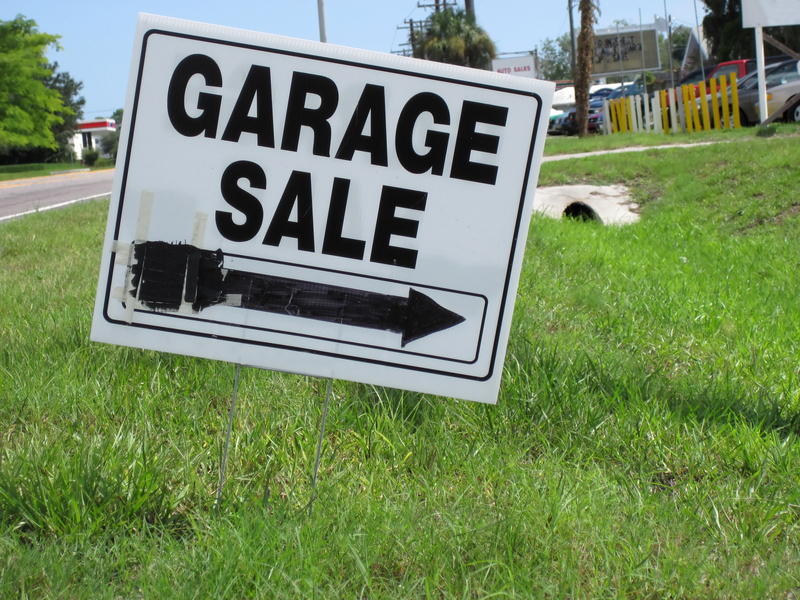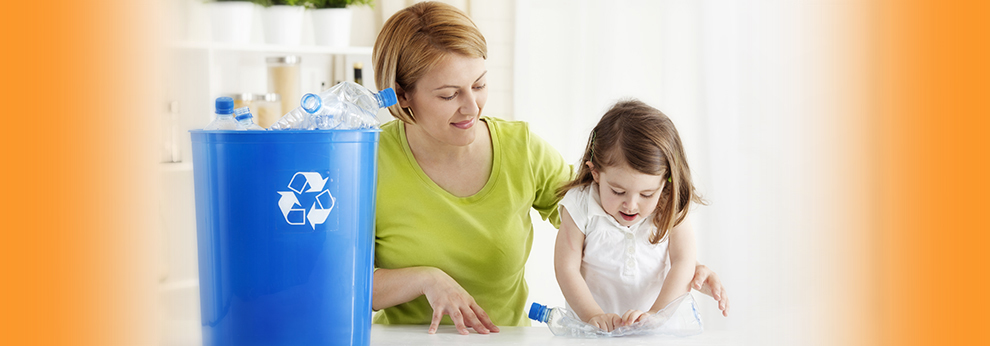Hazardous Waste Demystified: Know the Facts
Posted on 09/06/2025
Hazardous Waste Demystified: Know the Facts
Hazardous waste is a growing concern globally as we continue to generate more waste from industrial, medical, and household activities. Understanding what constitutes hazardous waste, how it affects our environment and health, and the best practices for its management is essential for responsible citizenship and corporate responsibility. In this comprehensive article, we'll demystify the key facts about hazardous waste, breaking down its definitions, types, risks, and safe handling methods. Equip yourself with the knowledge you need to protect the environment, your community, and future generations.
What Is Hazardous Waste?
Hazardous waste refers to waste materials that pose substantial or potential threats to public health or the environment due to their chemical nature, toxicity, ignitability, corrosivity, or reactivity. Such waste can originate from a variety of sources including industrial processes, laboratories, hospitals, agriculture, and even households.
- Toxicity: Harmful or poisonous substances that can cause adverse effects to humans or wildlife.
- Ignitability: Materials that can catch fire easily.
- Corrosivity: Substances capable of destroying materials or living tissue upon contact.
- Reactivity: Chemicals that can explode or release dangerous gases when mixed with other substances.
Hazardous waste is tightly regulated to prevent catastrophic environmental and health consequences. The proper identification and management of such waste are critical for minimizing risks and ensuring compliance with legal requirements.

Types of Hazardous Waste
The categorization of hazardous wastes can be complex, but generally, they fall under one or more of the following types:
- Listed Wastes: Specified by regulations as hazardous due to their origin or composition.
- Characteristic Wastes: Identified by hazardous traits such as being flammable, reactive, corrosive, or toxic.
- Universal Wastes: Commonly produced hazardous wastes like batteries, pesticides, and certain bulbs, managed under relaxed standards for easier recycling.
- Mixed Waste: Contains both radioactive and hazardous waste components, necessitating specialized handling.
Common Examples
- Industrial Chemicals: Solvents, paints, degreasers, and chemical residues from manufacturing plants.
- Biomedical Waste: Syringes, soiled bandages, expired pharmaceuticals, and laboratory agents from healthcare settings.
- E-waste: Outdated electronics like computers, phones, and TVs--which may contain heavy metals such as lead and mercury.
- Household Hazardous Waste: Cleaning products, pesticides, automotive fluids, and batteries.
- Persistent Organic Pollutants: Toxic chemicals like polychlorinated biphenyls (PCBs) and dioxins.
Sources of Hazardous Waste
Understanding the origins of hazardous materials can help in their management. Main sources include:
- Manufacturing Industries: Producing dyes, plastics, pharmaceuticals, and metals often produces large quantities of hazardous waste.
- Agricultural Activities: Use of pesticides and fertilizers creates waste harmful to ecosystems.
- Healthcare Facilities: Hospitals, laboratories, and clinics produce biomedical and chemical wastes.
- Households: Everyday use of cleaning agents, paints, and automotive products generates small but significant amounts of hazardous residue.
- Construction and Demolition: Asbestos, lead-based paints, and other building materials can qualify as hazardous wastes.
Why Is Hazardous Waste Dangerous?
The dangers of hazardous waste stem from its potential to threaten human health and contaminate natural resources like air, soil, and water. Here's how:
- Health Risks: Exposure to toxic chemicals can cause acute or chronic health issues--ranging from mild irritation to cancer, neurological disorders, and even death.
- Environmental Damage: Improper disposal can result in soil contamination, water pollution, and harm to plants and animals--sometimes leading to ecosystem collapse.
- Air Pollution: Certain hazardous wastes release toxic fumes or greenhouse gases when incinerated or decomposed unsafely.
- Fires and Explosions: Flammable and reactive wastes may cause devastating fires or explosions if not managed correctly.
The Science Behind Hazardous Waste Classification
Not all waste is equally dangerous. Regulations such as the Resource Conservation and Recovery Act (RCRA) in the United States and the Basel Convention internationally provide clear criteria for distinguishing hazardous substances from ordinary waste.
- Regulatory Lists: If a waste appears on specific government hazard lists, it is automatically considered hazardous.
- Testing and Characteristics: Waste is tested for traits like ignitability, corrosivity, reactivity, and toxicity using standardized analytical methods.
- Concentration and Thresholds: Only above certain concentrations do wastes become classified as hazardous under law.
The purpose of such rigorous classification is to ensure that dangerous wastes are handled, stored, treated, and disposed of with the highest degree of safety.
How Is Hazardous Waste Managed?
Managing hazardous waste is a multi-step process that requires specialized infrastructure and strict regulatory compliance. Here's an overview of the lifecycle:
1. Generation and Identification
- Waste generation begins at its source. Producers must identify whether their waste meets the regulatory definition of hazardous waste material.
2. Storage and Labeling
- Secure containers: Use of leak-proof, appropriately labeled containers to prevent exposure and accidental mixing.
3. Transportation
- Specialized transporters move hazardous waste from the generator to treatment, storage, or disposal facilities (TSDFs) using vehicles compliant with regulatory standards.
4. Treatment
- Various methods are used, such as chemical neutralization, thermal treatment (incineration), or stabilization to reduce the waste's hazardous properties.
5. Disposal
- Final disposal includes engineered landfills with impermeable liners, deep-well injection, and other state-of-the-art solutions designed to contain and isolate harmful substances.
Risks of Improper Hazardous Waste Disposal
The consequences of discarding hazardous materials incorrectly are severe. Let's examine some risks:
- Water Pollution: Dumping hazardous substances into sewers, rivers, or landfills can contaminate groundwater and drinking supplies.
- Soil Contamination: Persistent chemicals render land unusable for agriculture and pose risks to plants and animals.
- Bioaccumulation: Toxic elements like mercury can enter the food chain, accumulating in tissues and affecting humans and wildlife.
- Legal Penalties: Violating hazardous waste disposal laws can result in hefty fines and reputational damage for individuals and companies.
Proper hazardous waste management is not just a legal obligation but also a moral imperative.
Global and Local Regulations Governing Hazardous Waste
Several national and international laws regulate the generation, handling, and disposal of hazardous wastes. Some notable frameworks include:
- The Resource Conservation and Recovery Act (RCRA): U.S. federal law governing hazardous waste from "cradle to grave."
- The Basel Convention: International treaty controlling transboundary movements of hazardous wastes and ensuring their environmentally sound management.
- European Union Waste Framework Directive: Defines hazardous waste and outlines obligations for member states.
- Local regulations: States, provinces, and municipalities may have stricter counterparts or supplementary requirements for hazardous waste management.
Best Practices for Safe Hazardous Waste Handling
Minimizing risk starts with proper management techniques by businesses, institutions, and individuals. Here's how to handle hazardous substances safely:
- Identify and segregate: Always identify hazardous items and keep them separate from regular waste.
- Label clearly: Containers should be easily identifiable, with clear, waterproof labels indicating contents and hazards.
- Use appropriate storage: Store wastes in compatible, secure containers away from heat or ignition sources.
- Education and training: Ensure all personnel handling hazardous waste undergo comprehensive training.
- Maintain records: Keep thorough documentation of waste generation, movement, and disposal for legal and operational traceability.
Household Hazardous Waste: What You Need to Know
Did you know that everyday items in your home can be considered hazardous waste? Many people unknowingly dispose of batteries, paints, antifreeze, or electronics incorrectly, posing a risk to waste workers and the environment.
- Participate in community collection days: Many municipalities offer designated days for safely collecting and disposing of household hazardous waste.
- Consult local guidelines: Learn your area's policies on items like paint, light bulbs, and old electronics before disposal.
- Try to reduce or reuse: Avoid buying hazardous products where possible, and try to use up old supplies rather than discarding them half-full.
The Future of Hazardous Waste Management
The field of hazardous waste management continues to evolve thanks to technological advances and stricter environmental policies. Trends include:
- Increased recycling: Advanced recycling processes that reclaim valuable materials from hazardous items, such as rare metals from e-waste and lithium from batteries.
- Waste minimization: Improved manufacturing practices and green chemistry are reducing the generation of dangerous by-products.
- Bioremediation: The use of plants and microorganisms to clean up contaminated land and waterways is gaining momentum as an eco-friendly solution.
- Global cooperation: International treaties and cross-border initiatives are improving oversight, transparency, and accountability in hazardous waste operations.

Fast Facts: Hazardous Waste Around the World
- Over 400 million tons of hazardous waste are generated globally each year.
- Electronic waste constitutes one of the fastest-growing hazardous waste streams.
- According to the WHO, exposure to hazardous medical waste leads to thousands of injuries and infections annually.
Knowledge is power--understanding hazardous waste is the first step toward making informed choices and supporting safer communities.
Conclusion: Taking Responsibility for a Safer Tomorrow
Hazardous waste doesn't have to be a mystery. By educating ourselves about hazardous materials and their risks, supporting responsible disposal, and advocating for better policies, we help build a safer, healthier planet. Whether you're a business owner, a healthcare professional, or a homeowner, it's your duty to recognize, handle, and dispose of hazardous waste responsibly.
Remember, every small action contributes to the well-being of our environment and the generations to come. Share this article to spread awareness, and make sure you always follow local regulations and best practices in hazardous waste management.



